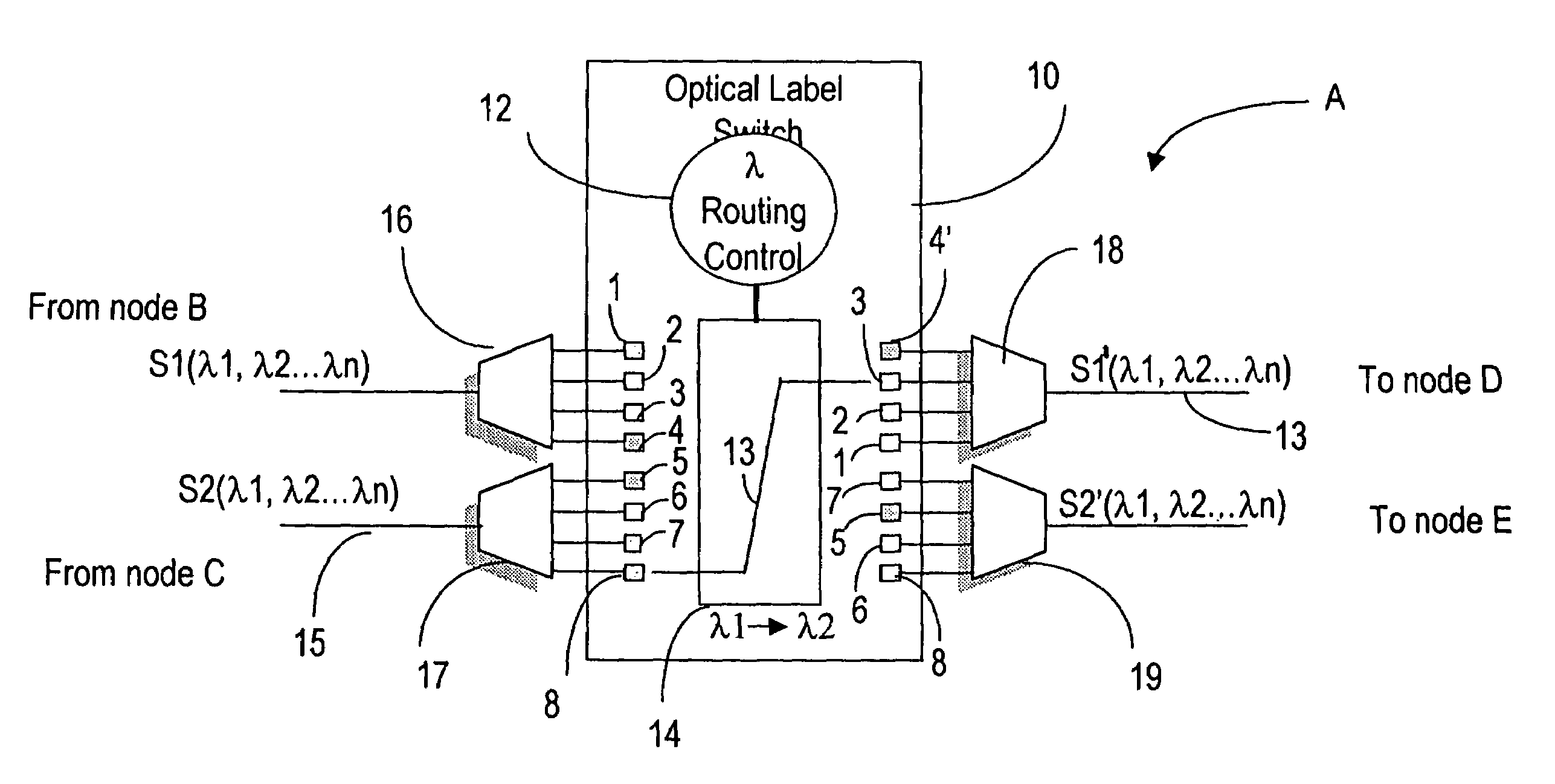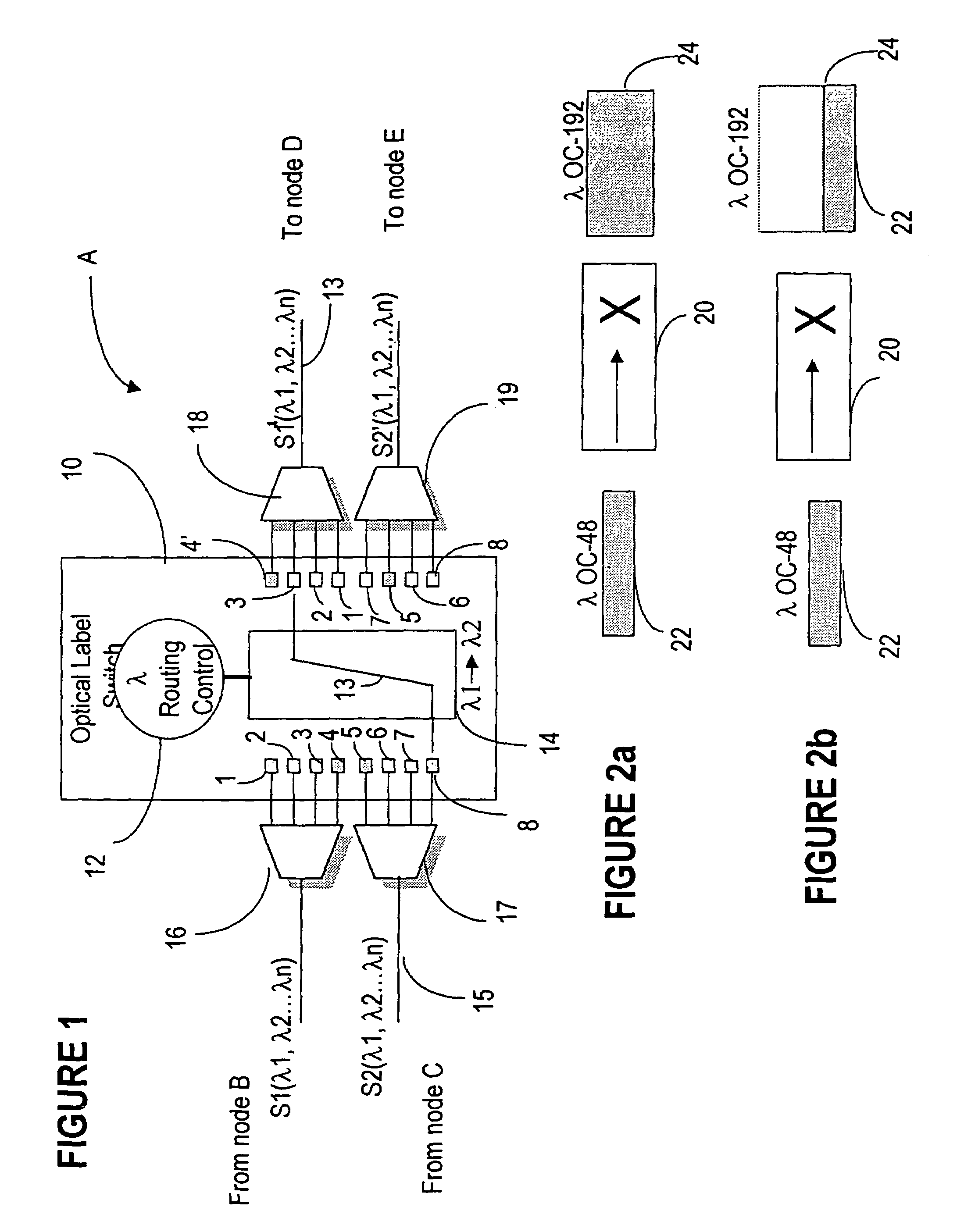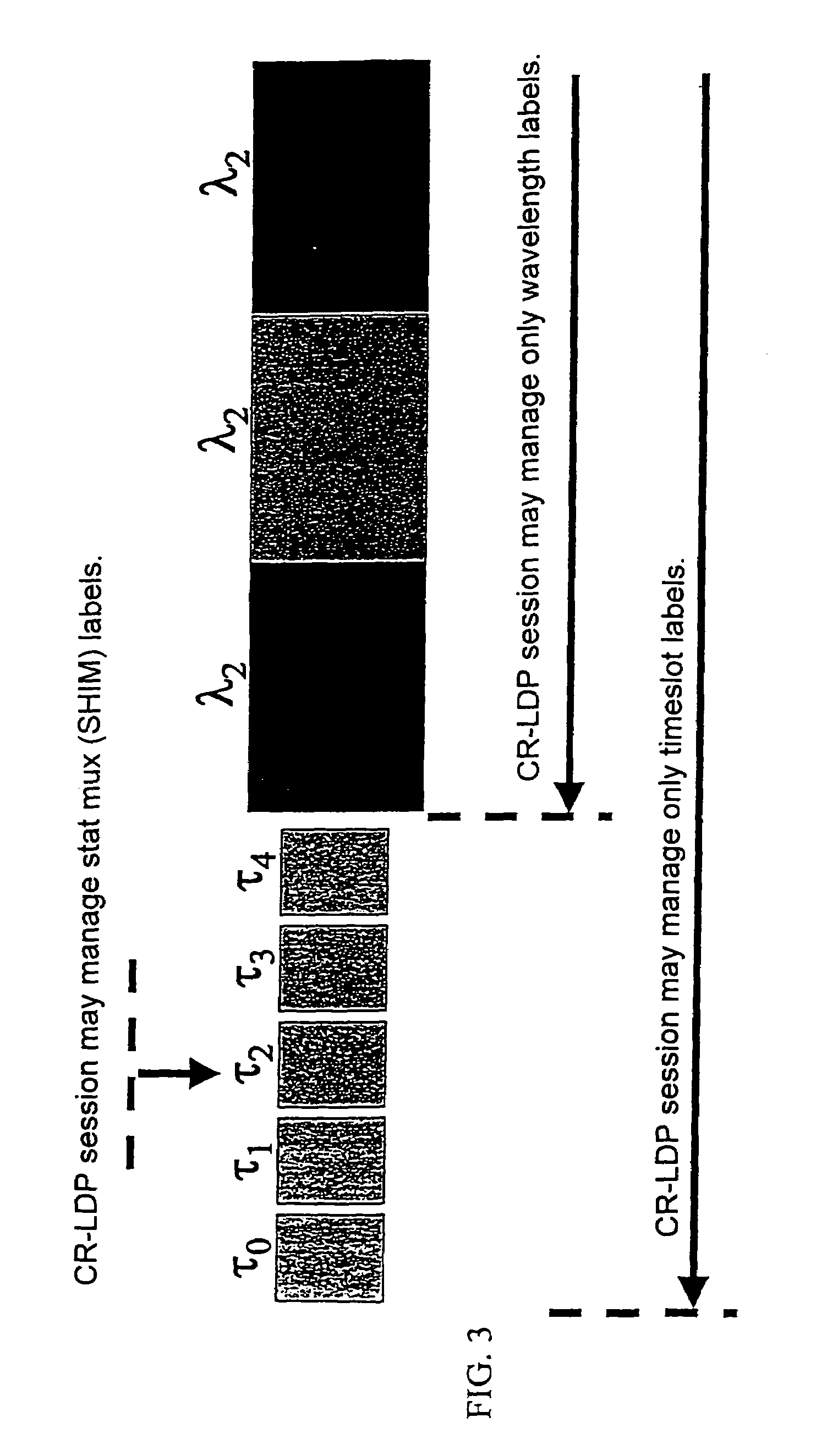MPLS application to optical cross-connect using wavelength as a label
a label and wavelength technology, applied in the field of optical communication systems, can solve problems such as the ability to convert wavelengths, and achieve the effect of simplifying the network
- Summary
- Abstract
- Description
- Claims
- Application Information
AI Technical Summary
Benefits of technology
Problems solved by technology
Method used
Image
Examples
Embodiment Construction
[0037]Throughout the description the CR-LDP protocol is used as an example and it is understood that any other protocol which can support ER- LSPs can be considered. Also, the description refers to SONET / SDH signals, but the invention is also applicable to other transport protocols.
[0038]The MPLS is used herein as a signaling protocol defined to setup, maintain, and release wavelength paths in an optical network. The term “path” in the context of the transport network is used in this specification to define a set of consecutive links connecting two end nodes. “End-to-end” refers to a path between a source and a destination router for a certain packet.
[0039]The main function of the optical MPLS protocol according to the invention is connection management by wavelength grouping and mapping, or label banding, according to combinations of destination addresses, and type of service (ToS) information. The ToS information may be provided according to optical FEC (Forwarding Equivalence Cla...
PUM
 Login to View More
Login to View More Abstract
Description
Claims
Application Information
 Login to View More
Login to View More - R&D
- Intellectual Property
- Life Sciences
- Materials
- Tech Scout
- Unparalleled Data Quality
- Higher Quality Content
- 60% Fewer Hallucinations
Browse by: Latest US Patents, China's latest patents, Technical Efficacy Thesaurus, Application Domain, Technology Topic, Popular Technical Reports.
© 2025 PatSnap. All rights reserved.Legal|Privacy policy|Modern Slavery Act Transparency Statement|Sitemap|About US| Contact US: help@patsnap.com



